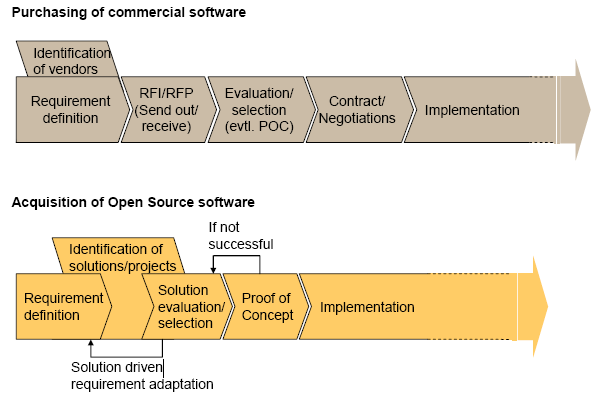
Acquisition of Open Source
Open source is a reality in today's enterprises. Most companies have 50, 100 or more open source components and systems in production, partly as an ingredient of commercial products, hidden as a component or transparently as infrastructure. According to leading industry analysts, the vast majority of enterprises will use open source as part of their mission critical applications.
The wide portfolio of open source projects and products and the difficult-to-control dynamics on the usage of these new technologies do not make life of CIOs and IT organisations easy. The responsible people raise viable questions around the support of all of these technologies, around intellectual property rights and licensing models, and around liabilities and risks involved using open source. These potential risks and problems are more than compensated by the benefits open source software offers to enterprises. Low costs, high quality, an unprecedented flexibility in the acquisition and use of software as well as an increased independence from vendors make more and more IT decision makers favor open source software.
However, acquiring open source software is quite different from the processes to which purchasing departments are accustomed.

While the gathering of requirements is still a key task in the beginning, it is recommended to leave more freedom for multiple approaches to solve a problem with open source. In the commercial software world, there are vendors to continuously inform their customer base and to answer large RFIs (requests for information), RFPs (requests for proposal) or RFQs (requests for quotation), and there is often neither the capacity nor the local presence available with open source projects and companies to do so. The customer himself or herself is supposed to identify the right solutions - this open source catalogue is a tool for helping with this task - and then to verify and evaluate potential solutions in a proof of concept. While this sounds like extra effort, and it often is, the total process of identifying, evaluating and selecting open source software can often be done in a significantly shorter timeframe than in the commercial software world. Contract negotiations are often not needed and proof of concept steps can be performed in a couple of days in many cases.


